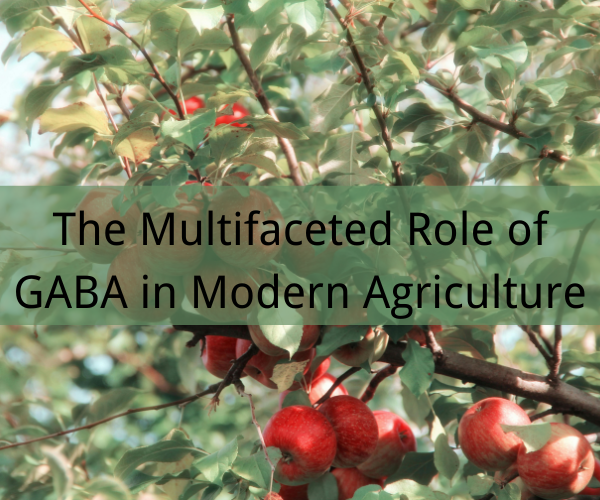As global agriculture faces unprecedented challenges from climate change and resource scarcity, gamma-aminobutyric acid (GABA), a non-protein amino acid, is revolutionizing crop management through its multidimensional biological functions. This article explores the science-backed applications of GABA in enhancing plant performance while aligning with eco-friendly agricultural practices.
Core Mechanisms: How GABA Reshapes Plant Physiology
1. Growth Promotion & Nutrient Optimization
GABA regulates cell division and elongation processes, thereby promoting the development of roots, stems, and leaves. Key mechanisms include:
- Enzyme activation: Stimulates glutamate decarboxylase (GAD) to enhance stem elongation and root architecture
- Nitrogen metabolism: Modulates GS/GOGAT cycle efficiency, improving nitrogen uptake by 18-27% in trials
- Photosynthetic boost: Increases chlorophyll content by 15% in treated crops
2. Stress Resilience Enhancement
GABA serves as a molecular shield against multiple abiotic stresses:
| Stress Type | Protective Mechanism | Efficacy |
| Drought | Osmoregulation via proline accumulation | 32% water loss reduction |
| Flooding | Maintenance of C/N metabolic balance | 40% survival rate increase |
| Temperature | Antioxidant system activation (MDA reduction 25-35%) |
| Salt/Alkali | pH regulation & ion homeostasis | 50% Na+ exclusion |
| Heavy Metals | Chelation & detoxification | Cd/Pb accumulation ↓30% |
3. Agricultural Chemical Management
Pioneering research from Shandong Agricultural University demonstrates GABA’s dual action:
- Pesticide degradation: Upregulates GST genes, accelerating chlorothalonil metabolism by 58%
- Phytotoxicity mitigation: Protects PSII efficiency (Fv/Fm ratio maintained at 0.78)
Field-Proven Applications & Protocols
Case Study 1: Tomato Production Optimization
- Protocol: Foliar spray with 3 mM GABA solution
- Results:
– 72% faster pesticide residue degradation
– 28% yield increase under saline-alkaline conditions
– Enhanced thermotolerance (45°C survival duration +6h)
Case Study 2: Biofortified Rice Production
Germination technique:
1. Soak grains at 35°C/85% RH for 24h
2. Activate endogenous GAD in embryos
3. Achieve 320mg/100g GABA in endosperm
Precision Application Guidelines
| Formulation | Foliar Spray | Irrigation |
| Solid (90% purity) |225-450 g/ha | 900-2,250 g/ha |
| Liquid | 675-1,350 mL/ha | 2,700-4,200 mL/ha |
Recommendation: Combine with humic acid (0.1%) for synergistic nutrient uptake enhancement
Technical Recommendations for Implementation
1. Production Method Selection
Biofermentation-derived GABA offers advantages:
– 40% lower production costs vs chemical synthesis
– Higher bioactivity (92% vs 78% receptor affinity)
– Zero chemical byproducts
2. Concentration Strategy
– Cereals: 0.5-2g/L
– Vegetables: 0.2-0.8g/L
– Fruits: 1.5-3g/L (pre-harvest stage)
3. Synergistic Formulations
– Stress relief: GABA + 5-ALA (1:3 ratio)
– Yield boost: GABA + seaweed extract (2:1 ratio)
Future Perspectives: GABA-Driven Agricultural Evolution
The integration of GABA into agricultural systems presents transformative potential:
- Climate-smart crops: Development of GABA-overexpressing transgenic varieties
- Circular agriculture: Waste-to-GABA conversion using microbial bioreactors
- Precision delivery: Nano-encapsulated GABA formulations for controlled release
Recent breakthroughs in CRISPR-Cas9 mediated GABA pathway engineering have shown 3-fold increases in endogenous GABA levels, signaling a new era of self-protecting crops.
From enhancing nutrient use efficiency to building climate resilience, GABA represents a paradigm shift in sustainable crop management. As research advances, this natural biostimulant is poised to become cornerstone technology for achieving UN Sustainable Development Goals (SDGs) in agriculture while ensuring food security for 10 billion people by 2050.


